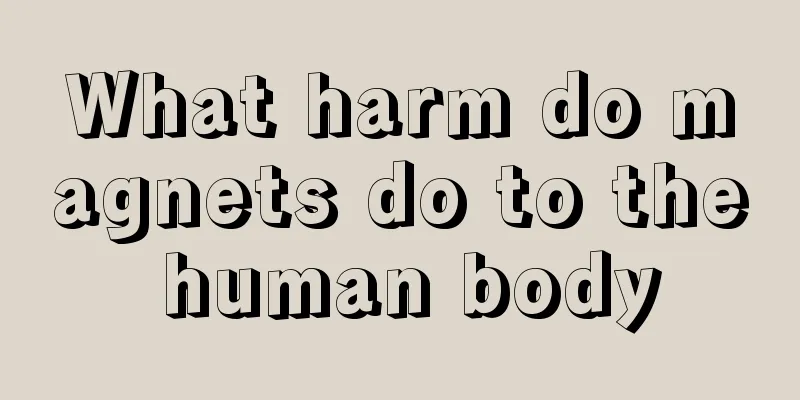Eye socket surgery

|
There are many reasons for sunken eye sockets, some of which are very difficult to solve, such as wearing glasses for too long, or sunken eye sockets caused by aging. Ordinary methods are unlikely to achieve significant improvement. In this case, eye socket surgery is needed to solve the problem. There are many types of eye socket surgery. We need to have a general understanding of them and choose the appropriate method to solve them. Dermal fat flap transplantation Indications A dermal fat flap is made immediately when the eyeball is enucleated. A dermal fat flap can also be made if the eye socket is sunken after the eyeball is enucleated, but the surgical effect is not satisfactory in emaciation patients. Preoperative preparation and anesthesia Routine preoperative preparation: routine skin preparation of the dermal fat flap donor area once a day for 3 days. The surgery is performed under local anesthesia. Surgical procedures A skin-fat flap of 2.0 cm × 2.0 cm in size and 2.0 cm × 2.5 cm in thickness is obtained from the abdomen below the navel or the upper outer quadrant of the buttocks for later use. Enucleation of eyeball and dermal fat flap transplantation 1. Remove the eyeball as usual. 2. Place a steel ball with a handle of appropriate size into the myoconium to apply pressure to stop bleeding. The assistant grasps the edge of the conjunctival incision with forceps and lifts it gently. The surgeon places the dermal fat flap into the myoconal cavity. During the implantation process, do not use forceps to push the fat tissue into the orbit to avoid excessive damage to the fat tissue. 3. Pull up the pre-placed sutures of the four rectus muscles and suture them to the corresponding dermal flap edges at 3, 6, 9, and 12 o'clock. Make a mattress suture between the edge of the dermal flap and the bulbar conjunctiva in each of the four quadrants and tie them off. The bulbar conjunctiva was sutured continuously. A patch is placed in the conjunctival sac and a compression bandage is applied. Transplantation of dermal fat flap for sunken eye socket after long-term enucleation 1. Use an eyelid speculum to open the eyelids. The conjunctiva and Tenon's fascia are incised horizontally at the posterior part of the conjunctival sac and separated toward the orbital rim. 2. Make an oblique incision between the rectus muscles from the nose to the temporal part and from the temporal part to the nose. Both tissue flaps contain a rectus muscle. The incisions in each quadrant were extended into the orbit and the myoconial cavity was enlarged. A steel ball with a handle is placed in the intramuscular cone cavity to apply pressure to stop bleeding. 3. Make pre-set sutures on the four front edges of the dermal flap. The assistant grasps the edge of the conjunctival incision with forceps and lifts it gently, and the surgeon implants the dermal fat flap into the myoconal cavity. The other steps are the same as above. Precautions during surgery 1. When injecting local anesthetics, try to inject them on the periphery of the dermal fat flap to avoid the needle from damaging the fat tissue. 2. When implanting dermal fat, the assistant grasps the edge of the conjunctival incision with tweezers and lifts it gently. The surgeon implants the dermal fat flap into the orbit. Try not to use tweezers to force the fat tissue into the orbit, which will damage a large amount of fat tissue and lead to a large amount of fat absorption after surgery, affecting the surgical effect. 3. Pull the eye muscles, apply intraorbital compression to stop bleeding, and pay attention to whether there is an eye-heart reaction when implanting the dermal fat flap. 4. Place a patch of appropriate size in the conjunctival sac after surgery. 5. When preparing the dermal fat flap, be sure to remove all epidermal tissue, otherwise epithelial implantation cysts may occur after the operation. Especially the opening of hair follicles. Postoperative care Antibiotics are given for two days after the operation to prevent infection. The first dressing is usually changed 5 to 7 days after the operation, and then every other day. The sutures are removed 10 days after the operation, and the removal of the sutures can be appropriately delayed if necessary. Continue to place the prosthesis in the conjunctival sac and change the elastic bandage for compression for 2 to 3 weeks. Try to fit the artificial eye 2 to 3 months after the stitches are removed. |
<<: Why are the eye sockets sunken
>>: What is the reason for dark eye sockets
Recommend
The correct way to hold a red wine glass
Many people believe that red wine is a symbol of ...
What medicine should I use for itchy blisters on the soles of my feet
There are many people with athlete's foot in ...
Early clinical manifestations of patients with cerebral infarction
The disease of cerebral infarction has attracted ...
What is the reason for the growth of fat particles?
Fat granules are often also called oil granules. ...
Rotator cuff muscle training method
The shoulders are the hub for movement of our upp...
Is CT or MRI better for lung cancer examination? Detailed description of the specific diagnosis method of lung cancer
Is CT or MRI better for lung cancer screening? Wh...
Will improper sleeping posture change the shape of the face?
We will find that the face shape of babies is alm...
What are some tips for repairing the stratum corneum?
If the stratum corneum of our skin is too thick o...
The efficacy and function of banana heart
Plantain is a food that belongs to the same famil...
What are the methods to straighten the physiological curvature of the cervical spine?
When the cervical spine grows normally, there is ...
What are the effects and functions of hawthorn?
Hawthorn is a common food in daily life. It has a...
What is the cure rate for late-stage ovarian tumors?
When ovarian tumors occur, many women actively se...
What is cholangiocarcinoma? See here
Cholangiocarcinoma occurs in the intrahepatic and...
The pros and cons of drinking water from a silver cup
Water is a very important substance in our lives....
I feel itchy all over when I sleep in the middle of the night
The role of the skin in the human body is very ob...









